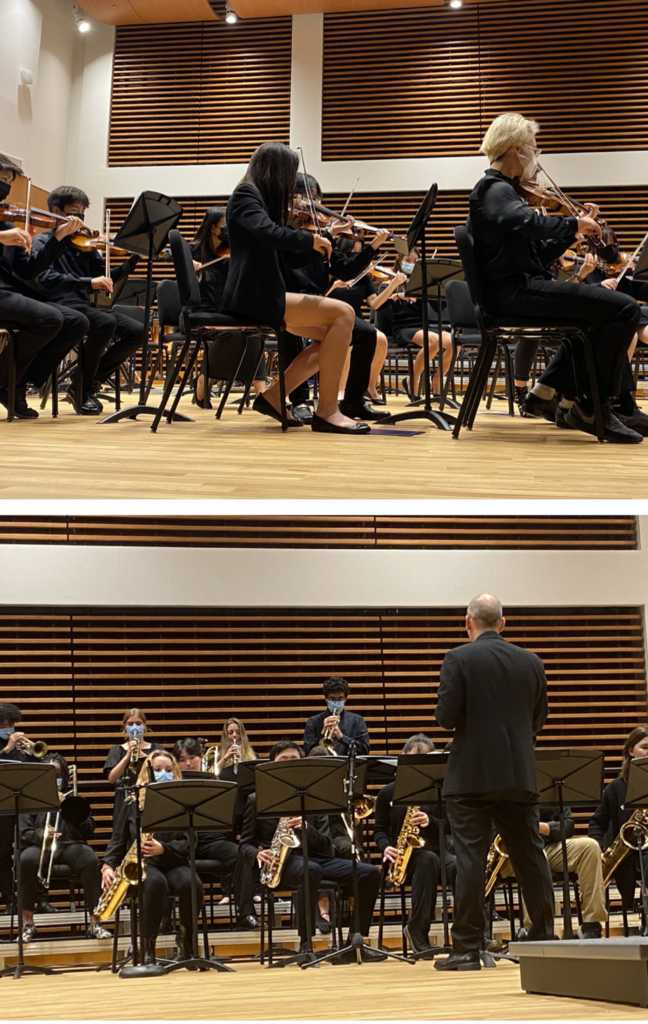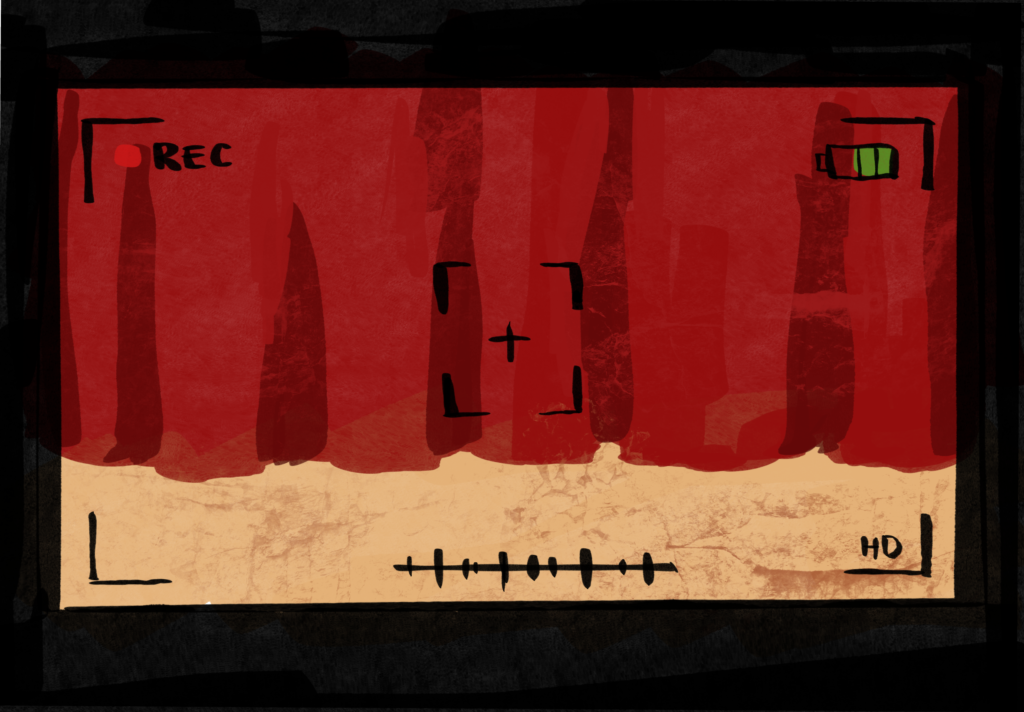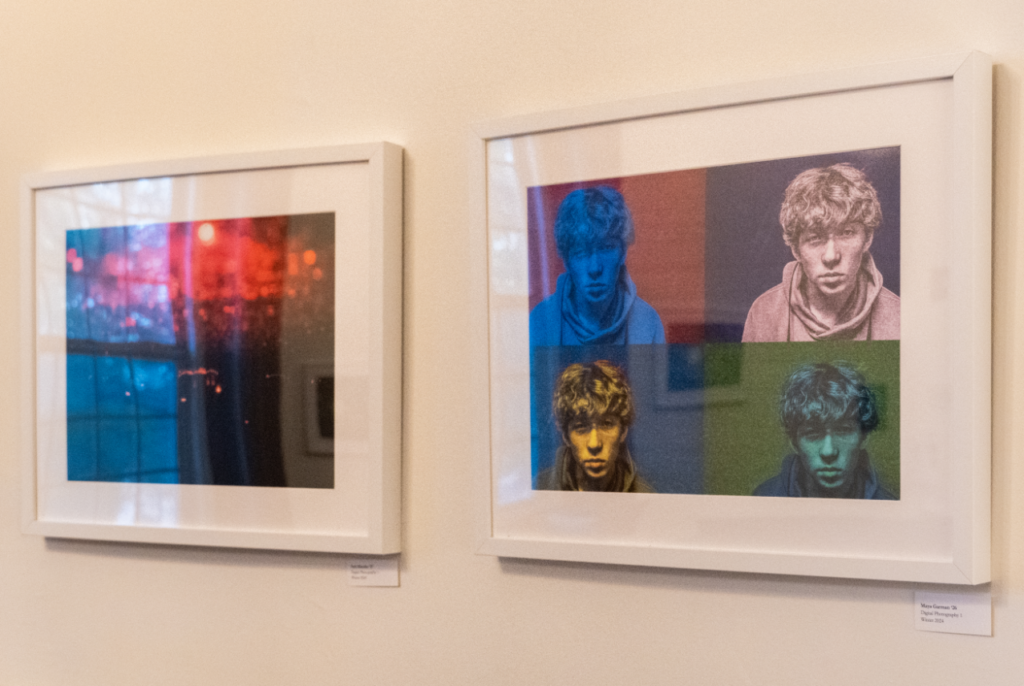
With symphonic sounds ringing through the auditorium, the Choate music ensembles revived the long-empty Colony Hall with music across different time periods and genres.
The Music Ensembles instrumental program opened with Wind Ensemble’s performances of “Encanto” by Robert W. Smith, “Hebrides Suite (III. Milking Song)” by Clare Grundman, “Elements (III. Earth)” by Brian Balmages, and “March of the Trolls” by Edward Grieg. These pieces were deliberately chosen to showcase a diverse selection of music and to highlight every section in the ensemble.
“We want to be engaging to the audience, so we want to have some kind of varied stylistic representation,” said Mr. Matt McLean, Director of Wind Ensemble and Jazz Ensemble. “So some of the songs are fast and some of the compositions have flow sections.”
Mr. Gene Wie, the Director of Concert Orchestra and Symphony Orchestra, followed a similar mindset in compiling the repertoire for the Concert Orchestra, which included “Prelude and Gavotte” by Arangelo Corelli, “Blue Ridge Run” by Alan Lee Silva, and “Symphony No.36 ‘Linz’” by W.A. Mozart and arranged by Richard Meyer. Mr. Wie chose pieces from a wide range of time periods to cater to both the performing musicians and the audience.
While Corelli’s work features textures from the late Renaissance and early Baroque periods and Mozart’s symphonies are well-established pieces of the Classical Period, Silva’s piece is reminiscent of 20th century American music and the Appalachian fields and plains, which Mr. Wie described as “patriotic rustic folk music of America of the 1900s.”
Unlike Concert Orchestra, the works that Symphony Orchestra performed were predominantly from the late Romantic period. “Also Sprach Zarathustra (Introduction)” by Richard Strauss and “Lyric Andante” by Max Reger elicited markedly different sentiments in the audience. “‘Zarathustra’ is very bombastic; it’s an audience pleaser. Whereas the Reger is more of a slow and introspective piece,” said Mr. Wie.
The Symphony Orchestra also performed movements from the “Suite from the Star Wars Epic – Part II,” which distinguished itself by its modern composition. “The themes from Star Wars are based on this concept called leitmotif, where each character has a theme, and that theme gets played in all sorts of different ways based on what the character is doing in the film at that time,” said Mr. Wie.
The Jazz Ensemble, with its usual formula of Count Basie, a Latin song, and a blues song, presented the audience with “Basie Straight Ahead” by Count Basie, “Manteca” by Dizzy Gillespie and arranged by Gil Fuller, “Full Nelson” by Oliver Nelson, and “Haitian Fight Song” by Charles Mingus.
While preparing for the concert, students not only practiced their individual parts but also referred to the full recording to have a comprehensive idea of the piece. “Students are expected to be playing in tune, playing with really good technique, and practicing all the different challenges that each instrument presents,” said Mr. McLean. Mr. Wie also noted that students have access to the full score of the piece, which can be helpful in gauging the larger context of the piece beyond the musician’s own part.
To better immerse herself in the piece, Aria Ramnath ’24, a member of the Wind Ensemble, said, “I associate certain pieces with an image; what the piece reminds me of.” When practicing “Encanto,” for example, she envisioned a scene with the ocean and the moon. “Having a visual makes it a lot easier to play because you can resonate with the music more. Especially creating an image in your head that’s similar to your own life, because it brings out more emotion in a piece,” said Ramnath.
Arissa Lee ’25, a member of Concert Orchestra, explained that she predominantly concentrates on the ensemble camaraderie to connect herself with the performance. “It’s just one big feeling that everyone in the orchestra is playing together, and it’s neat to be a part of something bigger than myself,” Lee said.
Considering the limited amount of time each ensemble had in this concert, ensembles decided to showcase the delight of being part of an ensemble rather than focusing on a specific theme. “We want to get across how fun jazz music is first of all, [and] how it has a certain vibrancy to it,” said Mr. McLean.




